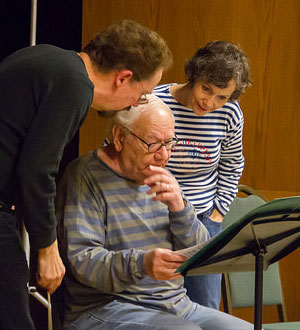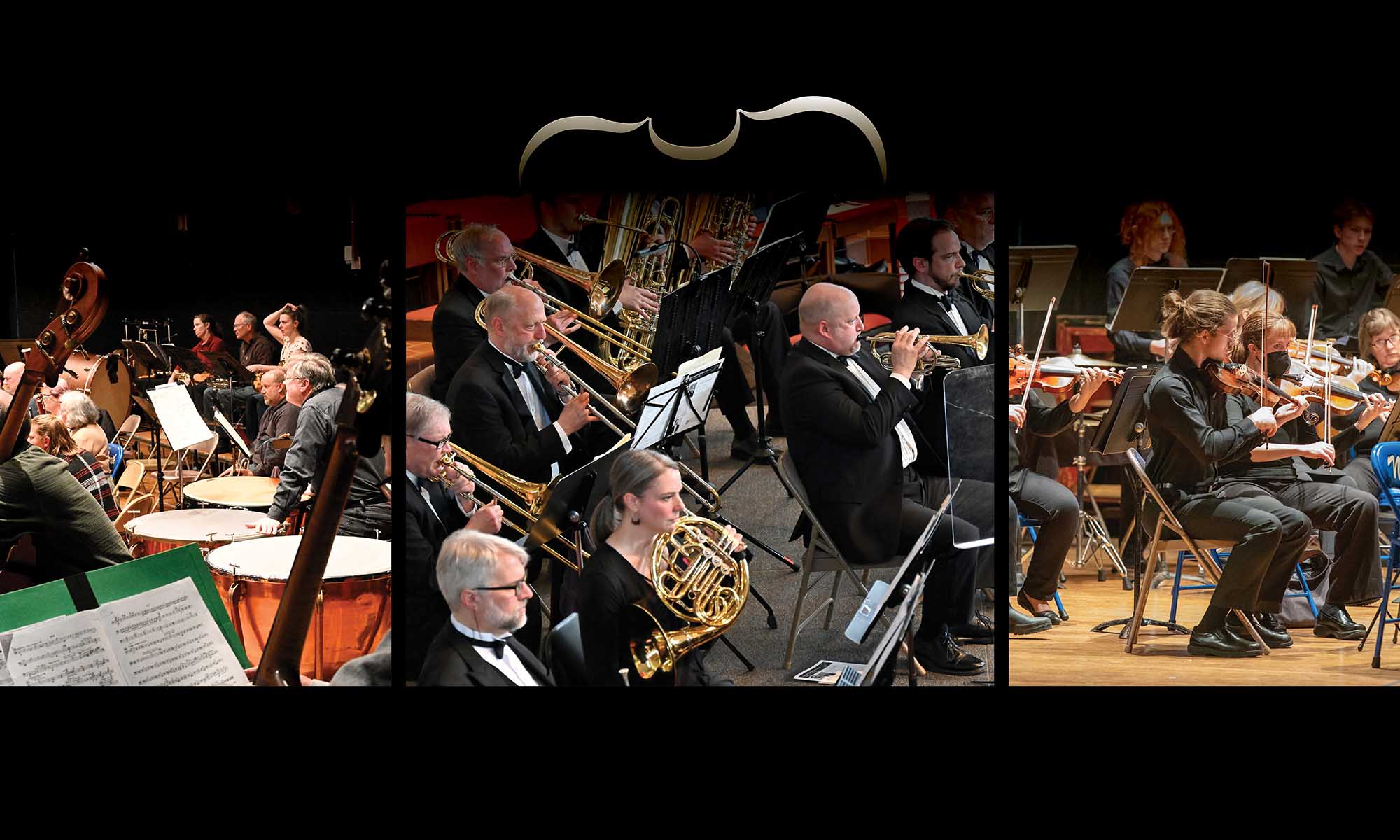Alex Ross, music critic of The New Yorker, mentions the MSO in his recent blog!:
http://www.therestisnoise.com/2014/10/miscellany.html


The Metropolitan Symphony Orchestra
Performing outstanding symphony concerts for diverse audiences throughout the Twin Cities.
News items and posts from MSO management
Alex Ross, music critic of The New Yorker, mentions the MSO in his recent blog!:
http://www.therestisnoise.com/2014/10/miscellany.html

A season welcome from our Executive Director, Jon Lewis –
Minnesota Treasures
For our 33rd season, the Metropolitan Symphony Orchestra celebrates the North Star State. Every concert we perform features a piece by a living Minnesota composer. Every concert. Further, the MSO has invited some friends out to play. Come join sopranos Maria Jette, Linh Kaufmann, and Clara Osowski; storyteller Kevin Kling; Uillean pipes player Tom Klien; Jake Endres; and the MSO’s viola player Daniel Erdmann and organist Kathrine Handford at our concerts this season.
In the early 1980s, the country was obsessed with the Minneapolis Sound, including Prince, The Replacements, and Husker Du. In the Fall of 1982, a different sound came out of the lower level of Central Lutheran Church in downtown Minneapolis, as the Central Chamber Orchestra held its first rehearsal, under the baton of St. Olaf College Orchestra Director Steve Amundson. 32 years later, the Metropolitan Symphony continues to bring outstanding classical music performances to audiences throughout the Twin Cities.
This year, our Minneapolis Sound will feature Minnesota composers Dominick Argento, Victor Zupanc, Libby Larsen, and the MSO’s own Daniel Erdmann, as well as a new piece by MSO favorite Polina Nazaykinskaya. Our season gets off to a great start with the World Premiere of Argento’s Ode to the West Wind for soprano and orchestra, featuring the wonderful Maria Jette, as well as Rachmaninoff’s Symphonic Dances. We go a bit Celtic and Viennese in November, with Kevin Kling narrating The Burning Damnation of Finn McCool, by Zupanc, and closing with Mahler’s Symphony No. 4, with soprano Linh Kaufmann. Firebirds and Monsters join the MSO for our annual one hour Family concerts in February, as we play Britten’s Young Person’s Guide to the Orchestra and Larsen’s A Child’s Garden of Monsters: Dracula’s Blues, both with narration by Pamela Hill Nettleton, and close with the suite from Stravinsky’s ballet Firebird. The March concert features another premiere, this one by MSO violist Daniel Erdmann, who will perform his own Viola Concerto, and Barber’s Essay No. 1, as well as Beethoven’s Symphony No. 5. We close our season with local premieres of pieces written over 100 years apart: a 19th Century work, Guilmant’s Symphony No. 2 for Organ and Orchestra, and Nazaykinskaya’s Reading the Wind. The other piece on that program allows us to bring the season full circle, with Argento’s beloved Casa Guidi for soprano and orchestra, based on the poetry of Elizabeth Barrett Browning, sung by mezzo-soprano Clara Osowski.
The MSO will feature Maria Jette in our October 19, 2014 opening concert. On Tuesday, July 22, you can hear Maria Jette and Dan Choinard perform some of the songs from their latest CD, The Siren’s Song: Wodehouse and Kern on Broadway, at The Women’s Club in Minneapolis at their CD release party. The event is free. Details at www.mariajette.com.
The Metropolitan Symphony Orchestra
William Schrickel, Music Director
Sunday, May 18, 2014—4:00 PM
Dragseth Auditorium, South View Middle School, Edina, Minnesota
William Schrickel, conductor
Marta Troicki, bassoon
South View Middle School 8th Grade Orchestra: Matt Pearson, Director
Program
Gustav Holst March from Suite #1, op. 28, No. 1
South View Middle School 8th Grade Orchestras
Johannes Brahms Hungarian Dance #5
South View Middle School 8th Grade Orchestra & Members of the Metropolitan Symphony Orchestra
Carl Maria von Weber Overture to Oberon, J. 306
Francisco Mignone Concertino for Bassoon and Chamber Orchestra (1957)
I. Assai Moderato
II. Allegro
Marta Troicki, bassoon
Intermission
Ludwig van Beethoven Symphony No. 3 in E-flat major, op. 55 (Eroica)
I. Allegro con brio
II. Marcia funebre: Adagio assai
III. Scherzo: Allegro vivace
IV. Finale: Allegro molto
Program Notes
Carl Maria von Weber (1786-1826) composed Oberon, his tenth opera and last major work, on a commission from London’s Covent Garden opera house. Weber had contracted tuberculosis and knew that he would die from the disease, so he accepted the generous commission in order to provide for his family’s well-being following his death. The opera, based on an epic poem written by Christian Martin Wieland in 1780, was to be sung in English, and Weber took 153 English lessons in Dresden before attempting to set James Robinson Planché’s libretto to music. Weber conducted the premiere on April 12, 1826, as well as eleven additional performances. He died in London less than eight weeks after that triumphant first performance, unable to muster the strength to return home to Germany to see his wife and children one last time.
Weber composed Oberon’s Overture in three days during the week before the premiere, incorporating in the introduction the title character’s horn theme and short snippets of “fairy music” in the flutes and clarinets. The main body of the overture develops several additional melodies and ideas from the opera: the heroic Huon’s swaggering theme in the violins, a love melody in the solo clarinet, a lusty dance rhythm associated with Puck and Droll, (two of the story’s elves), and a closing aria of victory sung by Reiza, the wife of Huon and the opera’s heroine.
Francisco Mignone (1897-1986) was born São Paolo, Brazil, and he graduated from his home town’s Conservatory of Music and Drama before traveling to Italy to attend the Milan Conservatory. A prodigy on piano, he led his own dance band at the age of 13, composing popular music under the pseudonym Chico Bororó. His earliest orchestral works and operas were written in a European style, but when he returned to Brazil after finishing his studies in Italy, he adopted a style of writing that clearly reflected the influence of Brazilian popular music.
Mignone composed his Bassoon Concertino in 1957 for the French bassoon virtuoso, Noël Devos, who had emigrated to Rio de Janeiro several years earlier. The introductory first movement is a sensual modinha, a love song. The finale, a rondo with a songful central section, is a flashy and witty carioca, a Brazilian dance similar to the samba.
Ludwig van Beethoven (1770-1827) completed his Symphony #3 in 1803, and it is a creative product of that particularly revolutionary time in European history. The composer was inspired by France’s Napoleon Bonaparte, whom he considered to be the greatest living champion of individual freedom and liberty. The title page of Beethoven’s manuscript originally bore only the name of the French general at the top and the composer’s own name at the bottom. When Beethoven heard the news from a pupil that Bonaparte had declared himself emperor, he flew into a rage, ripping the title page from the score. He furiously yelled, “Is he then, too, nothing more than an ordinary human being? Now he, too, will trample on all human rights and indulge only his ambition. He will exalt himself above all others, become a tyrant!”
It was Beethoven himself who ultimately bestowed the name Eroica, Italian for “heroic,” on the symphony. His revised dedication deleted the name of Bonaparte and simply stated that the work was “composed to celebrate the memory of a great man.”
Two powerful E-flat major chords, sounding like they’ve been shot from a cannon, launch the Eroica. The first movement alone is as long as many entire symphonies penned by Beethoven’s contemporaries. This is symphonic music on a scale unheard of previously. The second movement is a slow march, depicting the funeral of the hero whose exploits are celebrated in the Eroica’s opening movement. More than two hundred years after it was composed, this is still the music that is performed at funerals of the world’s great leaders and in memory of history’s most tragic events. Beethoven wrote for three french horns in the Eroica, and in the middle of the third movement scherzo (Italian for “joke”), he lightens the mood and summons the horns to the hunt. In his finale, Beethoven makes use of a theme he’d written several years earlier for his ballet The Creatures of Prometheus. As he’d done in the earlier movements, Beethoven expands the scope of the closing movement to epic proportions, creating music of incredible energy and grandeur from his Promethean theme.
©William Schrickel 2014